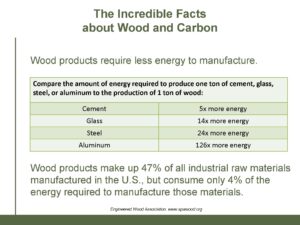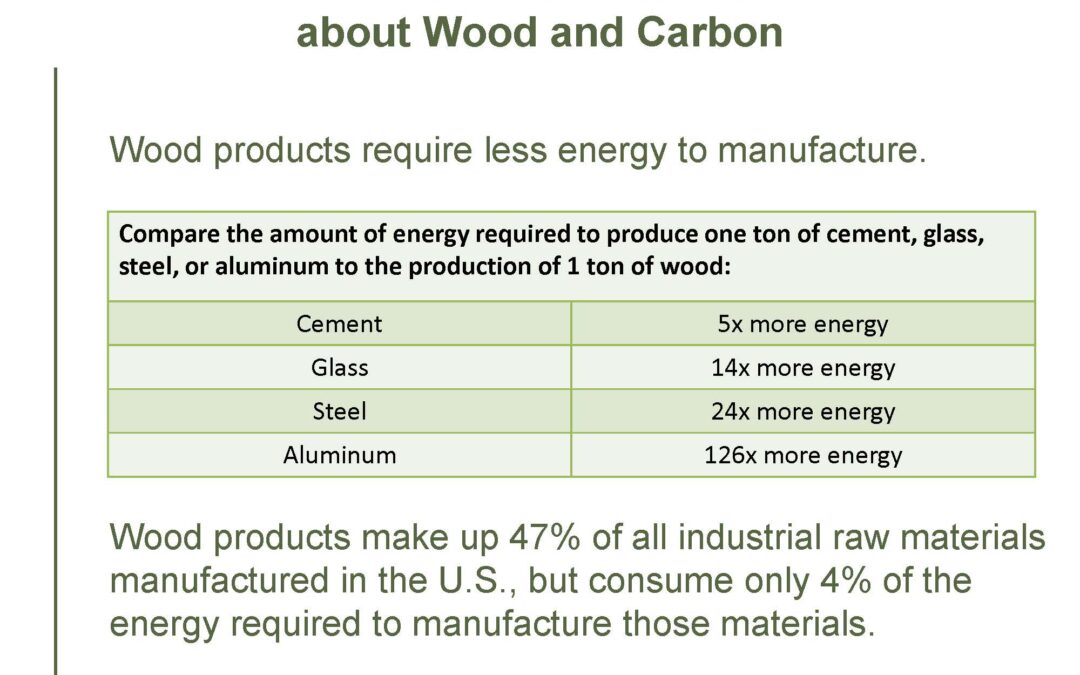Across the globe, concerns over climate change, global warming and the overabundance of carbon dioxide through the burning of fossil fuels, steel and aluminum production, building operations, deforestation and a myriad of other human activities, has scientists, environmentalists and politicians calling for everyone to be environmentally aware, knowledgeable and responsible.
So, why aren’t you specifying more American Hardwood? By virtue of its natural magnificence, wood reduces greenhouse gases in the atmosphere! Approximately half the weight of the kiln dried wood in any building project is sequestered carbon. And conversion of wood into products such as structural beams, window frames, furniture, flooring, cabinetry, and doors contributes to the long-term sequestration of carbon.
And did you know, wood products make up 47 percent of all industrial raw materials manufactured in the U.S. but consume only four percent of the total energy required to manufacture those raw materials? So, comparing the amount of energy required to produce one ton of aluminum, steel, glass, or cement to the production of one ton of wood, it requires:
- 126 times more energy for one ton of aluminum
- 24 times more energy for one ton of steel
- 14 times more energy for one ton of glass
- 5 times more energy for one ton of cement
So, if you are not specifying American Hardwood, start now. Replacing one cubic meter of concrete with one cubic meter of wood saves approximately one ton of CO2. And by all means remember that when considered through Life Cycle Assessment against other materials, hardwoods are favored for their extremely long service life, low carbon footprint, and eco-friendly disposal or repurposing at the conclusion of their useful lives.
Few building materials possess hardwoods’ overall environmental attributes. What’s there to think about?



